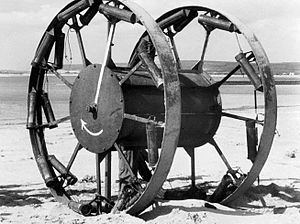Panjandrum
1. (A mock title for) a mysterious (frequently imaginary) personage of great power or authority.
2. A pompous or pretentious official; a self-important person in authority.
According to the OED, the word is supposed to have been coined in 1754 or 1755 as part of a a piece of nonsense written by actor and dramatist Samuel Foote (1720–77) to test the memory of his fellow actor Charles Macklin, who had asserted that he could repeat anything after hearing it once. In the first published version (in 1825) the relevant passage (attributed to Foote) is:
So she went into the garden to cut a cabbage-leaf to make an apple-pie; and at the same time a great she-bear, coming up the street, pops its head into the shop. “What! No soap?” So he died, and she very imprudently married the barber; and there were present the Picninnies, and the Joblillies, and the Garyulies, and the grand Panjandrum himself, with the little round button at top, and they all fell to playing the game of catch-as-catch-can till the gunpowder ran out at the heels of their boots.
(It’s not up to Lewis Carroll’s standard, but never mind, eh!)

Panjandrum was also a (failed) experimental World War II device (above), invented by Nevil Shute, for delivering high explosive to enemy targets. There’s a good description of this on Wikipedia.
The word’s original derivation is unknown.
